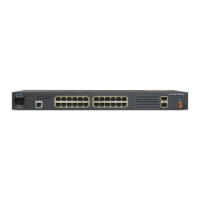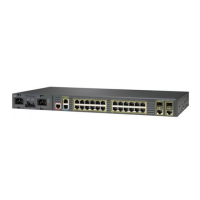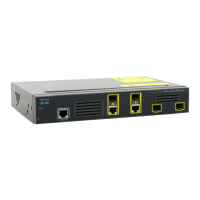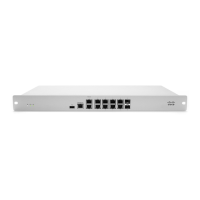35-3
Cisco ME 3400 Ethernet Access Switch Software Configuration Guide
OL-9639-07
Chapter 35 Configuring IP Unicast Routing
Steps for Configuring Routing
Steps for Configuring Routing
By default, IPv4 routing is disabled on the switch, and you must enable it before routing can take place.
For detailed IP routing configuration information, see the Cisco IOS IP Configuration Guide,
Release
12.2
In the following procedures, the specified interface must be one of these Layer 3 interfaces:
• A routed port: a physical port configured as a Layer 3 port by using the no switchport interface
configuration command.
• A switch virtual interface (SVI): a VLAN interface created by using the interface vlan vlan_id
global configuration command and by default a Layer 3 interface.
• An EtherChannel port channel in Layer 3 mode: a port-channel logical interface created by using
the interface port-channel port-channel-number global configuration command and binding the
Ethernet interface into the channel group. For more information, see the
“Configuring Layer 3
EtherChannels” section on page 34-14.
Note The switch does not support tunnel interfaces for unicast routed traffic.
All Layer 3 interfaces on which routing will occur must have IP addresses assigned to them. See the
“Assigning IP Addresses to Network Interfaces” section on page 35-5.
Note A Layer 3 switch can have an IP address assigned to each routed port and SVI. The number of routed
ports and SVIs that you can configure is not limited by software. However, the interrelationship between
this number and the number and volume of features being implemented might have an impact on CPU
utilization because of hardware limitations. To support IPv4 routing, use the sdm prefer default global
configuration command.
Configuring IPv4g routing consists of several main procedures:
• To support VLAN interfaces, create and configure VLANs on the switch, and assign VLAN
membership to Layer 2 interfaces. For more information, see
Chapter 11, “Configuring VLANs.”
• Configure Layer 3 interfaces.
• Enable IPv4 routing on the switch.
• Assign IPv4 addresses to the Layer 3 interfaces.
• Enable selected routing protocols on the switch.
• Configure routing protocol parameters (optional).
Configuring IP Addressing
IP routing requires that Layer 3 network interfaces are assigned IP addresses to enable the interfaces and
to allow communication with the hosts on interfaces that use IP. These sections describe how to
configure various IP addressing features. Assigning IP addresses to the interface is required; the other
procedures are optional.
• Default Addressing Configuration, page 35-4
• Assigning IP Addresses to Network Interfaces, page 35-5

